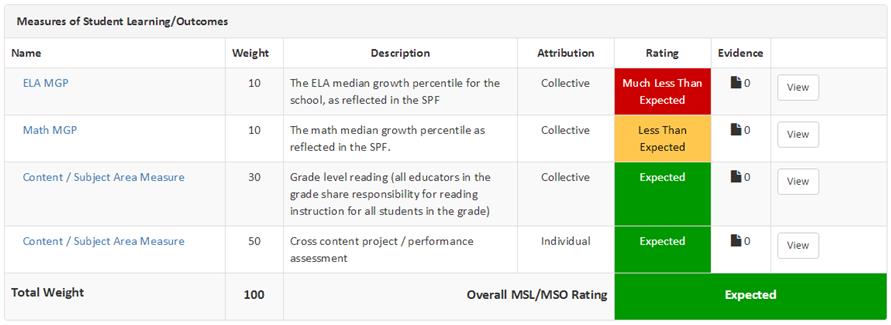You are here
Measures of Student Learning Approaches for Selecting and Using Multiple Measures in Teacher Evaluation-Step 6
Step 6: Combine weighted ratings from individual measures into an overall MSL rating.
By assigning weights to each of the multiple measures in educator evaluations, districts are signaling which results or measures in the system are deemed to have more value than others, are better aligned with student learning expectations, and are more appropriate for measuring educator impact. Districts may preliminarily weight each measure at the beginning of the school year, however the weights must be finalized before a measure of student learning rating can be determined. Districts are encouraged to continuously evaluate the impact of weighting decisions and make revisions as needed in the upcoming evaluation cycles.
Table 5 provides an illustration of how districts may consider distributing the weights assigned to each MSL (which was also shown in Table 2), and how the ratings from individual measures sum for a single overall MSL rating (for the technical information on summing to an overall rating see the end of Step 6). Each of the columns is described below:
| Name | Measure Name (general) |
| Weight | Weight of the measure |
| Description | Measure description including more specific information |
| Attribution | Attribution (need at least one individual and one collective measure) |
| Rating | Rating (much less than expected, less than expected, expected, and more than expected) |
Table 5: MSL weighting and combining ratings example as shown in COPMS (refer to Tables 3 and 4 for example success criteria)




Connect With Us




